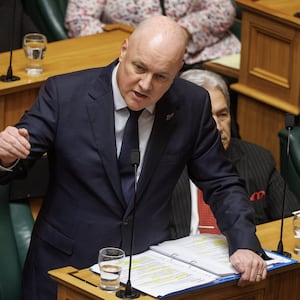Article content The Avro Arrow has taken on myths of epic proportions since the Diefenbaker government scrapped its development in 1959. According to such folklore, the cancellation was the result of a deep conspiracy that scuttled superior Canadian technology at the behest of a jealous American military-industrial complex. If not that, it was a rookie Canadian prime minister in his early days in office buckling before an American political master who wanted to suppress Canadian ingenuity — this even though Diefenbaker’s nationalist sentiments were hardly conducive to such imagined pressure.
The origin of the Avro Arrow dates back to 1952, when Air Force defence planners sought to construct a made-in-Canada airframe to be fitted out with British or American engines and systems. However, over time, and not as expected, it became a uniquely Canadian project as foreign suppliers abandoned the initiative. Canadian companies were happy to fill the void on the engine and other systems, with RCA Victor in Hamilton, Canadair in Montreal and Canadian Westinghouse earning lucrative contracts.

Over 400 smaller Canadian companies became part of the supply chain. In December 1953, the Royal Canadian Air Force had forecast it would need about 500 planes, with a cost estimated at less than $2 million per plane. Four years later, that cost estimate increased by 500 per cent, and the number of planes the Air Force needed dropped to about 100.
The Avro Arrow was an engineering marvel. Its speed matched the world record at twice the speed of sound. It flew as high as any other aircraft and, in theory, could defeat Soviet bombers that threatened North America if swooping in over the Arctic.
However, difficulties with the Arrow were revealed as early as 1955 when the distressed Liberal “minister of everything,” C.D. Howe, said, “I can say that now we have started on a program of development that gives me the shudders.
” Nonetheless, on Oct. 4, 1957, the first Arrow prototype was displayed in a public relations triumph before 12,000 people at the Avro plant. When Diefenbaker came into office in June 1957, the Royal Canadian Air Force had concluded that the Avro Arrow was not economically feasible or militarily desirable.
In his memoir, Diefenbaker wrote, “I have it on unchallengeable authority that Mr. St. Laurent and Mr.
C.D. Howe had decided that the Arrow was to be cancelled.
” Indeed, Canada’s chief bureaucrat had independently studied the issue and concluded that the Avro Arrow had become a giant white elephant. Geopolitical risk mattered to this calculation. By 1958, it was more important to develop technology to counter a Russian buildup of intercontinental ballistic missiles, which was not within the capacity of fighter jets.
The cabinet recommended cancelling further development of the Arrow and negotiating with the United States to share two Canadian Bomarc missile bases. Defence Minister George Pearkes said the Bomarc was cheaper than the CF-105 and likely more effective. The missiles could be fitted with an atomic warhead, which the Americans would likely provide.
The military and financial implications pointed unequivocally to the termination of the Arrow. However, with 25,000 jobs at stake and potential technology transfers, it was as much a political as a military decision. On Sept.
23, 1958, Diefenbaker made an announcement that indicated the days of the Arrow were numbered. The announcement was the equivalent of a severance package with six months’ notice. Diefenbaker ultimately made what he thought was the responsible decision.
He was not subjected to American influence; except they made it clear that they would not purchase the aircraft. The United States had its versions of the Arrow, such as the F-101B Voodoo and the F-106 Delta Dart, which were already in production and much cheaper than the Arrow. At the time, only five prototypes of the Arrow had been produced, none of which were equipped with munitions.
Diefenbaker would have liked nothing more than for Canadian talent to best its American counterparts. “I had listened to the views of various experts; I had read everything I could find on the subject; I thought about it constantly; and finally, I prayed for guidance. The buck stopped with me, and I had to decide.
” Diefenbaker set out his reasons in the House of Commons on Feb. 20, 1959: “The government has carefully examined and re-examined the probable need for the Arrow aircraft and Iroquois engine — known as the CF-105 — the development of which has been continued pending a final decision. It has made a thorough examination in the light of all the information available concerning the probable nature of the threats to North America in future years, the alternative means of defence against such threats and the estimated costs thereof.
The conclusion arrived at is that the development of the Arrow aircraft and Iroquois engine should be terminated now.” The press was largely supportive. Pundits were impressed by Diefenbaker’s decisiveness in the face of inevitable adverse political fallout.
A Globe and Mail editorial called the decision “not only wise and courageous, but one which will save the taxpayers a good deal of money.” In Maclean’s magazine, Blair Fraser wrote, “The plain truth is nobody thought the government would have the courage to make such a painful decision..
.. It meant an early end to more than twenty-thousand jobs, most of them in the very heartland of the Conservative Party.
...
It disappointed a big Canadian industry with many Conservative shareholders.” Much has been made of the decision to render the Arrow prototypes to scrap. Conspiracy theorists have suggested this was done to placate American interests, as they did not want any evidence of a superior Canadian product to exist.
Diefenbaker insists he issued no such directive and was unaware that the pre-production models had been destroyed. While the decision became a political football, Diefenbaker took some consolation in a note from the Liberal Sen. W.
D. Euler, who had served in the Mackenzie King cabinet as the minister of trade and commerce: “May I compliment you on your courage and common sense in ‘dropping the Arrow’ despite the intense pressure, which will probably continue. The loss of employment is, of course, regrettable, but I hope we shall not adopt the philosophy which advocates useless and ruinous expenditures merely for the sake of providing employment.
That must be dealt with in other ways.” Excerpt from “ Freedom Fighter: John Diefenbaker’s Battle for Canadian Liberties and Independence ” by Bob Plamondon, published by the Aristotle Foundation for Public Policy . Reproduced with permission.
.
Politics

Bob Plamondon: There was no conspiracy behind the cancellation of the Avro Arrow

Contrary to the myths, Diefenbaker's decision ultimately came down to dollars and cents















